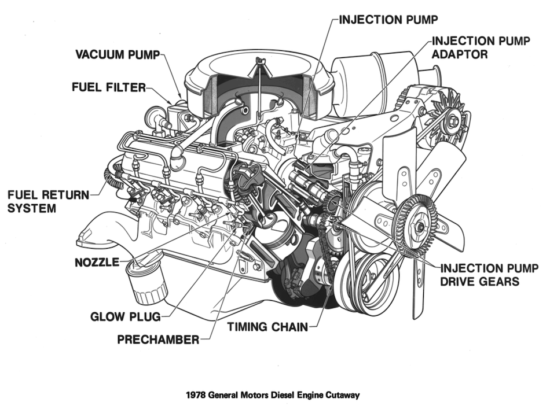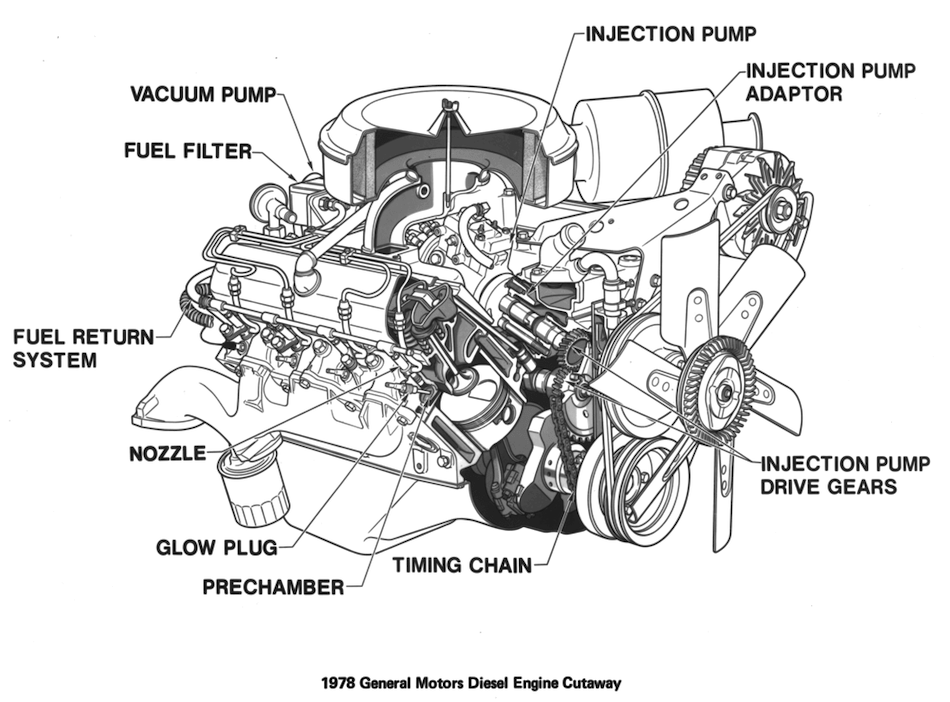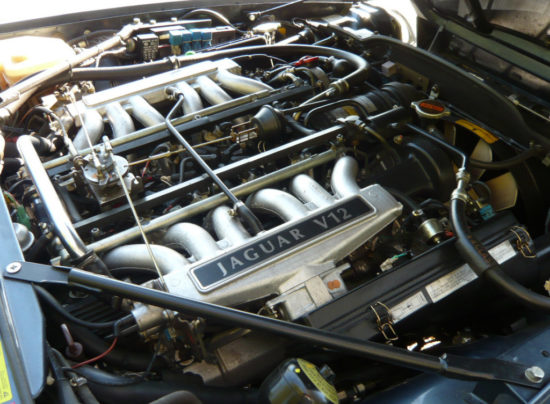by Wallace Wyss –
We always hear about what a great design a designer did on a car, but it’s funny I don’t hear any reports on what a rotten design someone did on an engine. Until I caught a video on YouTube on that subject. So I’m naming a few all-time losers but would rather have readers nominate one they lost their wallet on.
Too bad the car companies don’t name which engineer signed off on that engine as OK to build because those engineers deserve a little lambasting, if not banishment from the automotive engineering profession. After all they take doctors’ licenses away when they screw up big time (malpractice?) but why not auto engineers when they sign off on an engine with a fatal flaw? Or maybe just send them to a work farm on a desert island where their job every day is rebuilding Yugo engines.
A few engines with bad reputations
Yugo 55 In late 1983, the Yugo 55 came with a 1.1-liter carbureted engine that with all its might could only crank out an abysmal 55 horsepower and had one of the worst reliability ratings in history.
New VW Beetle engines found on 2013 models. According to CarComplaints.com some timing chains failed, causing severe damage to the engine. One owner said that there was a litigated settlement from Volkswagen regarding the timing chains on 2013 Beetles. According to TimingChainLitigation.com, the settlement was granted final approval on December 14, 2018. This settlement covers certain 2012-2014 Beetles and Beetle Convertibles, as well as other Volkswagen and Audi models.
Subaru 2.0 and 2.5-liter (non-turbo) There is a place in the engine where naught but a paper seal separates oil and water. When that thin paper seal erodes, there goes the engine. According to the site Copilot Search “The faulty head gasket is one of the most common problems of Subaru and was quite damaging due to engine oil leaks. The faulty head gaskets suffered from leaks between the cylinder head and engine block, causing the oil or coolant to leak. This defect was widespread and lasted for about five years and two rounds.”
Apparently, the culprit was the coating used for the head gaskets which failed at 100,000 miles. The problem was so bad that Subaru was forced to extend its powertrain warranty.
Jaguar V12 On paper, great idea, great sound. But various fuel lines get brittle, break and light the engine on fire.
Cadillac North Star This was the engine that was supposed to save the Allante. But it was worse than the 1st generation Allante V8. While the Northstar engine was actually designed to be difficult to overheat, design flaws did the opposite. They turn a lot of oil which creates excess carbon buildup, which leads to increased engine temps which leads to blown gaskets.
Chevy 2.2-liter Ecotec Timing Chain Tensioner Failure, Leaking Intake Manifold Gaskets, Oil Leaks & Gasket Leaks; High Mileage Maintenance.
Lexus 2.5 V6 Carbon buildup. This can cause misfires and damage the engine if you run it for too long (engine is direct injected ). Oil sludge. Leaking/defective water pump. Excessive Oil consumption. Oil burning. Sparkplugs need to be replaced more often compared to other cars.
Oldsmobile V8 Diesel GM unwisely thought “Hey we can make a diesel out of an ordinary gasoline burning V8 “but didn’t take into account how much more robust Diesel engines have to be.

Oldsmobile 350 V8 – image from Diesel World
I will add another one – the Alfa Romeo 2-liter 4-cylinder engine in the 1983 Spider Veloce that I owned. Not that it is a bad engine but it had a design flaw that was easy to correct. One day I was checking the oil and noticed water in the oil. After taking it back to the dealer (when there were Alfa dealers in the US) the technician told me that the head gasket was broken allowing coolant to flow into the engine oil. He said this always happened eventually and that it was an easy fix because the after market head gaskets were wider and thus did not break in such a short time. Neither he nor I could understand why Alfa did not use a wider head gasket from new since there was enough room to do so.
In the early 1980s a friend of mine had the misfortune of buying a new Olds Cutlass Supreme and had nothing but trouble with the diesel engine.
What about you – do you have an experience with a poor engine design?
Mike Gulett, Editor
Let us know what you think in the Comments.
THE AUTHOR Wallace Wyss talks about new cars and collector cars as co-host on Autotalk, a weekly show broadcast out of KUCR FM Riverside, Ca.






So if the Jag V12 had better fuel lines, it would then become a great engine?
I have a Subaru Outback with the 2.5 non turbo. 286 K on the original engine. Religious oil changes eliminate the blown head gaskets.
Still not a robust engine, though I would check what the Group 44 team did to improve them, how stock their engine was. All I know is that the V12 looks good, sounds good but I’m putting it in the “bad” department. Many times the engine works fine in its native country but to meet emissions laws, the manufacturer updates it for the US or wherever it’s going and the “fixes” destroy it.
Wasn’t the Yugo 55 engine the same design as the Fiat 128? In which case it was designed by Aurelio Lampredi after his Ferrari days. Maybe the execution was the problem rather than the engineering?
My father-in-law had an Olds diesel back in the day. He owned an HVAC company, and as people converted from oil heat to natural gas, he had lots of heating oil to dispose of; As his company lot was very small. he put 5 250 gallon oil tanks in his side yard and used the surplus oil to fuel the Olds, carefully filtering it. The engine was certainly not trouble-free, but considering the cost of fuel, he viewed it as a bargain. The only problem occurred when one of the neighborhood kids would knock on the door after he was interrupted while refueling and say “Mr. John, there’s oil running down the street”.
This one is very famous:
“The Porsche 911 and Porsche Boxster from model year 1997 to 2005 have a high failure rate of the intermediate shaft bearing also known as an IMS bearing. Its design and construction lead to premature failure of the bearing, which results in catastrophic engine failure. The intermediate shaft’s basic function is to drive the four camshafts via timing chains. The bearing that typically fails is at the flywheel end of the crankshaft. Both the double row and single row IMS bearings in the M96 engine are prone to this type of failure.” Most of the “catastrophic” engine failures occurred after the warranty expired on these engines, leaving many owners having to replace the entire engine or scrap their very expensive sports car at their own major expense. Now, when you buy a 911 or Boxster from these years, you are advised to have evidence from the seller that either the IMS bearings were already replaced (a MAJOR service) or that the engine has been replaced. Glenn in Brooklyn, NY.
The Triumph Stag 3.0 liter V8 has a history of being problematic, such that it was a short lived model here in the U.S. ‘71 thru ‘73) due to engine issues as well as need to meet U.S. bumper safety requirements. At the time the Stag was being produced, Triumph engineers designed their own small block V8 with cast iron block and aluminum heads. One of the engine issues revolved around the water passages becoming corroded if the correct antifreeze wasn’t used or not changed regularly. Also, the water pump sat high up on the engine and had too few vanes and water circulation was poor, Both issues mentioned caused the Stag V8 to overheat and warp the cylinder heads, resulting is a significant number of warranty claims. Part of the issue too was this engine required an owner to kelp on top of maintenance more than a typical U.S. V8 which engines were pretty bullet proof. Back in the day due to the engine issues, the Stag got the nickname the “Snag”. Sales were poor due to reliability issues and prices low for used examples. This has all changed now as the engine issues have been mostly resolved in the aftermarket with high capacity’s radiators, water pumps with more vanes for better water circulation and use of better antifreezes and owners who are more religious on upkeep. I had a ‘73 Stag converted to a Ford 302 y a prior owner which was a nightmare conversion (too long to get into) and later, a ‘71 Stag with stock V8. The ‘71 had the aftermarket fixes and ran beautifully and was one of the most reliable cars I’ve ever owned. Also, the Michelotti design was beautiful and the Stag has seen great collector interest mostly in the UK for many years now and values are on the rise. At the time the Stag was to be introduced is when Triumph was coming under the BL umbrella. It was proposed that the car use the Rover (Buick designed) 3.5 V8 which would have been a better engine choice considering the issues with the Stag V8. However, the Triumoh engineers won out over the Rover engine and the Stag, which was meant to compete with the SL Mercedes, is but a footnote to history.
I saw a totally customized Stag at a cars ‘n coffee and the basic shape is appealing
but he butchered the dash entirely. I think Porsche was lucky there was not more of a hue and cry about having to pay for engines and trannies. Few people know of that problem . I read somewhere Porsche did a little hocus pocus with emissions and that hasn’t hit the general headlines yet either. I think car companies that deliberately mislead on emissions should be punished big-time but you hardly ever see the major car magazines mention it–they don’t want to bite the hand that feeds them
Wallace, “A California federal judge agreed to approve an $80 million class action lawsuit settlement to resolve claims Porsche markets its gasoline sports cars with misleading emissions fuel economy ratings.
On Oct. 21, U.S. District Judge Charles Breyer said in a Zoom meeting he plans to issue an order signing off on the $80 million deal, which includes a $24 million fee payment to the plaintiffs’ lawyers, Law360 reports.
Under the deal, consumers in the fuel economy class will receive $250 to $1,109 per vehicle, depending on their vehicle’s revised fuel economy ratings and how long they have had the vehicle.
Porsche agreed to a class action lawsuit settlement worth at least $80 million to resolve claims its gasoline sports cars are marketed with misleading emissions fuel economy ratings.
The settlement benefits current and former owners and lessees of certain Porsche Sport+ gasoline vehicles as of June 29, 2022. A full list of covered vehicles can be found on the settlement website.” Glenn in Brooklyn, NY.
Going back 90 years, even older than I, the venerable Ford flathead was an awful design. In my youth I worked in my dad’s automotive machine shop. If I had a dollar for every cracked block I repaired, I’d buy a new C8.
The design Siamesed two exhaust valves into one passage and then ran that through the water jacket. What could go wrong? Besides running hotter than hell (especially in an Arizona summer) the heat would start a crack in an exhaust seat. If driven long enough, this would grow and propagate into the cylinder wall. The repair (I almost erroneously said fix) was a process called “cold-welding.” This entailed drilling and tapping a number of overlapping tapered holes, screwing in tapered iron plugs, cutting them off and peening them flush. A hardened valve seat was installed into a newly machined recess. If the crack got as far as the cylinder bore then it was bored oversize and a repair sleeve was pressed in and bored to size.
Fifties model Olds and Cadillac V8 heads were not immune from valve seat cracking on the paired center exhaust ports.